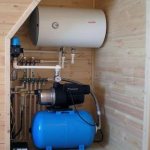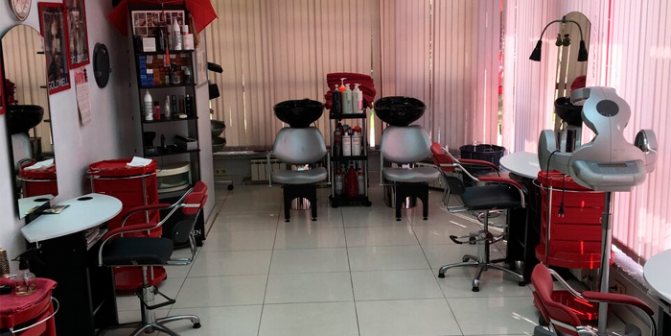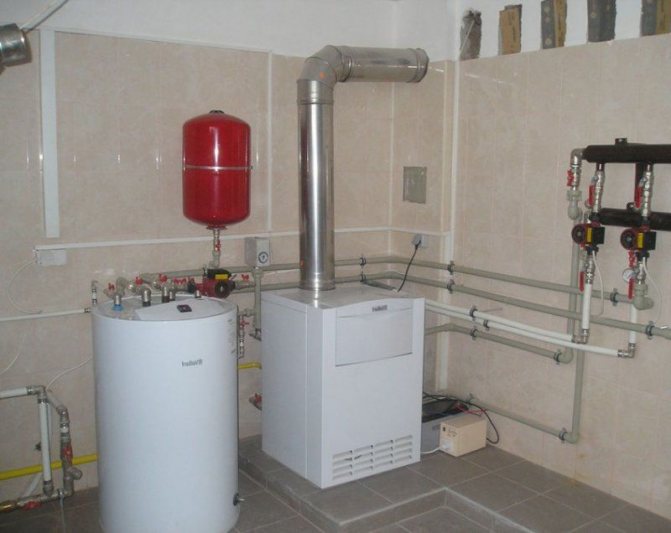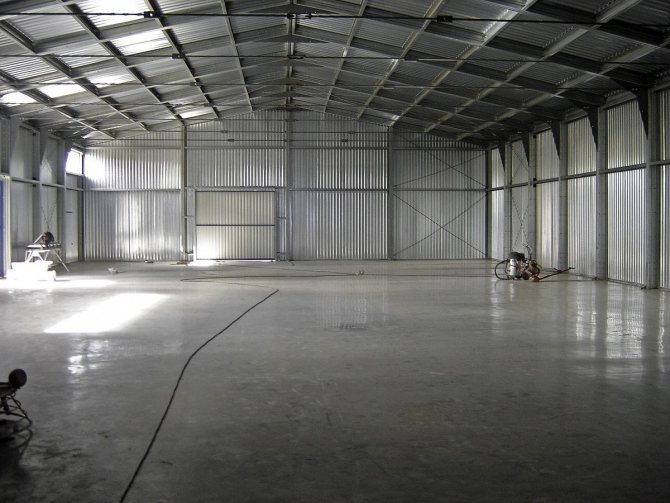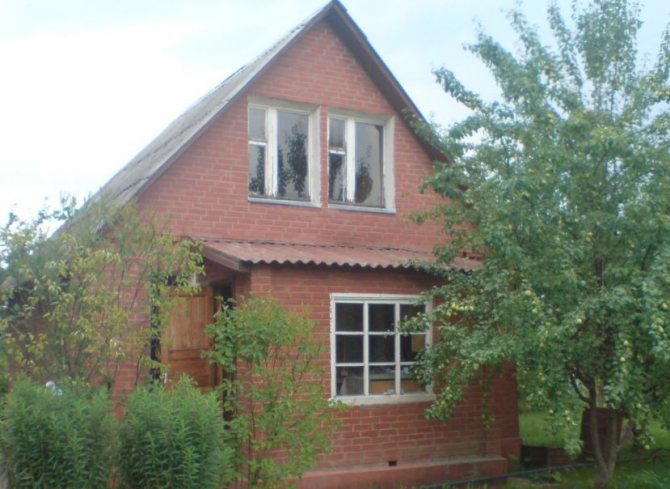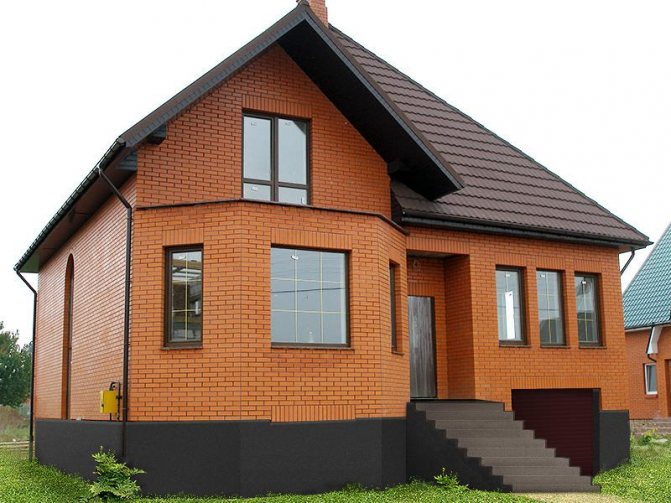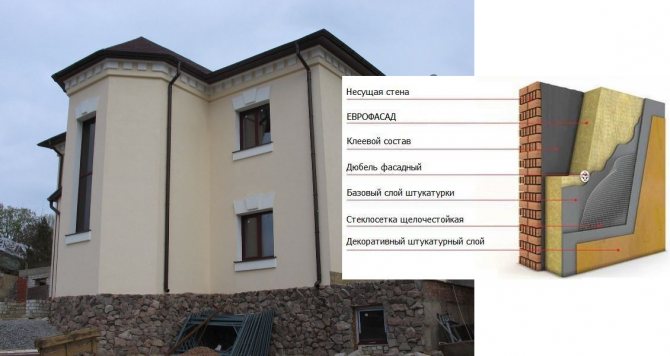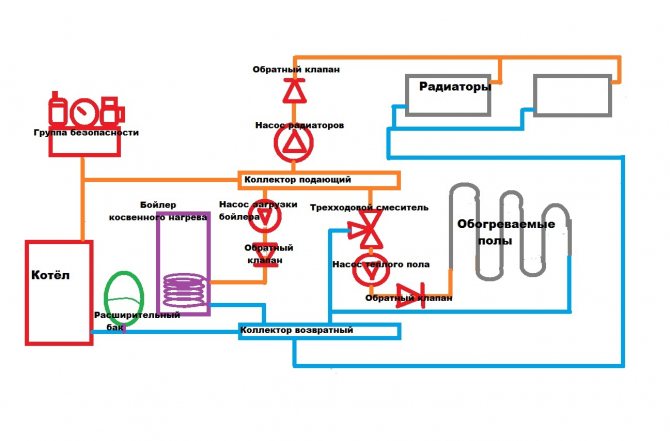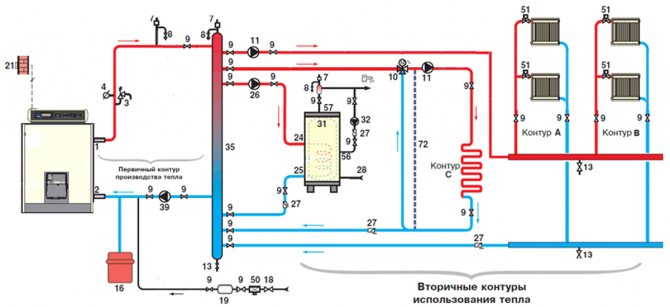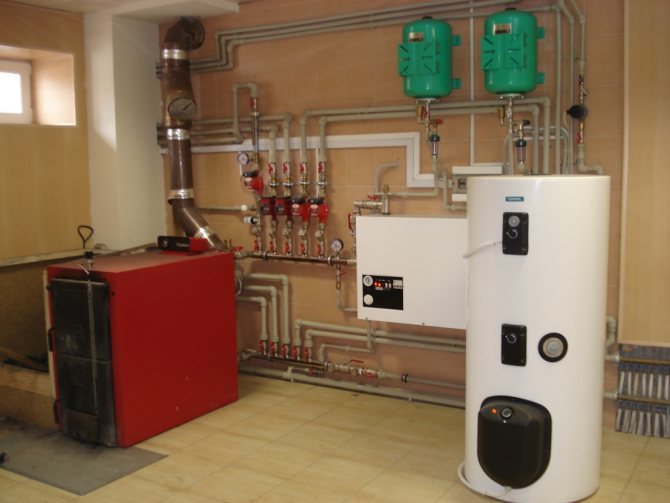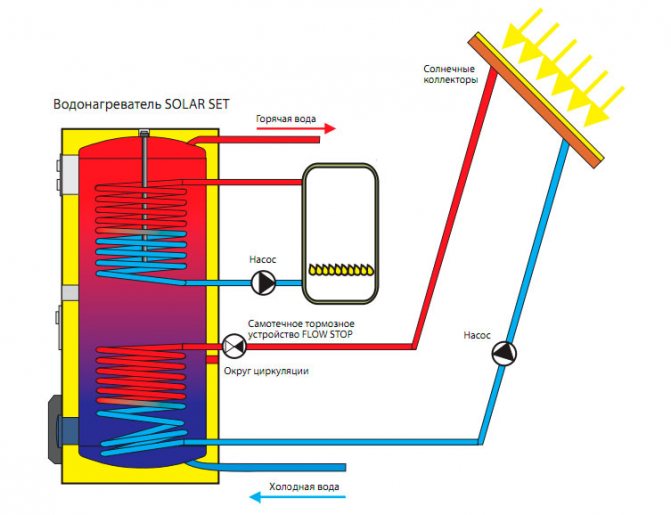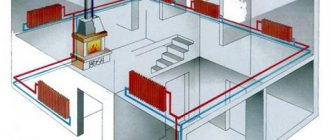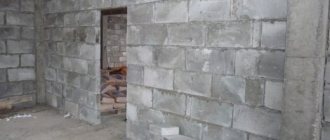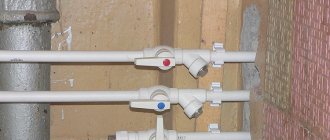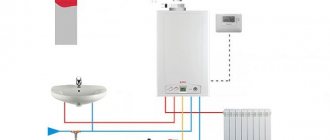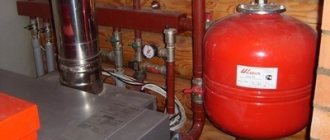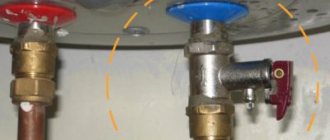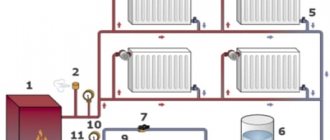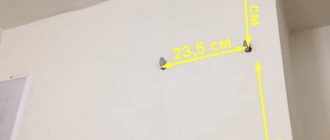The topic of this article is the calculation of water supply networks in a private house. Since a typical small cottage water supply scheme is not very complex, we do not have to go into the jungle of complex formulas; however, the reader will have to assimilate a certain amount of theory.
Fragment of the water supply system of a private house. Like any other engineering system, this one needs preliminary calculations.
Features of the wiring of the cottage
What, in fact, is the water supply system in a private house easier than in an apartment building (of course, in addition to the total number of plumbing fixtures)?
There are two fundamental differences:
- With hot water, as a rule, there is no need to provide constant circulation through risers and heated towel rails.
In the presence of circulation inserts, the calculation of the hot water supply network becomes noticeably more complicated: the pipes need to pass through themselves not only the water disassembled by the residents, but also the continuously circulating masses of water.
In our case, the distance from the plumbing fixtures to the boiler, column or tie-in to the line is small enough to ignore the rate of hot water supply to the tap.
Important: For those who have not come across DHW circulation schemes - in modern apartment buildings, hot water supply risers are connected in pairs. Due to the pressure difference in the tie-ins created by the retaining washer, water is continuously circulated through the risers. This ensures a fast supply of hot water to the mixers and year-round heating of heated towel rails in the bathrooms.
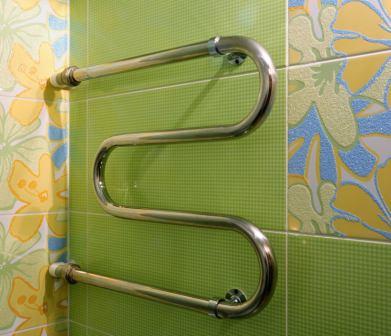
The heated towel rail is heated by continuous circulation through the hot water risers.
- The water supply system in a private house is divided according to a dead-end scheme, which implies a constant load on certain sections of the wiring. For comparison, the calculation of the water supply ring network (allowing each section of the water supply system to be powered from two or more sources) must be performed separately for each of the possible connection schemes.
Calculation based on the rated power of the boiler
How are boilers for hot water supply calculated with indirect heating boilers of significant volume and high water consumption from the DHW system?
The calculated power is equal to the sum of two terms:
- The needs of the house for heat without taking into account the safety factor;
- Boiler rated power. On average, it is equal to 15 kilowatts per 100 liters of volume.
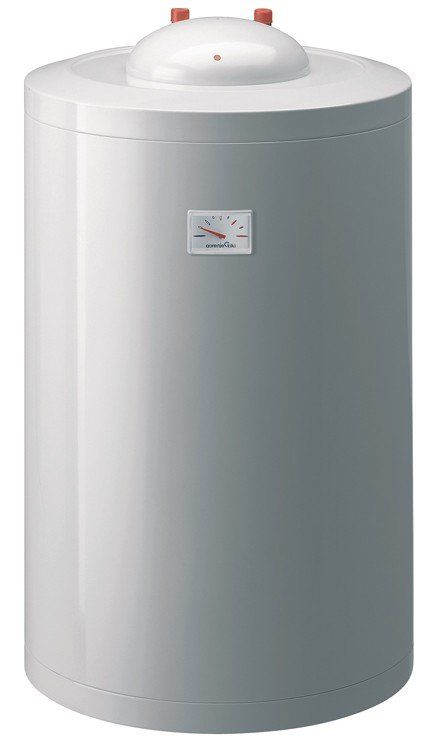

Indirect Gorenje GV 100 (17400 watts)
Nuance: 20% is subtracted from the addition result, since the boiler heat exchanger will not provide heating and hot water supply with heat around the clock.
So, when the notorious Gorenje GV 100 is installed in our house in Sevastopol, the boiler capacity for water supply and heating will be 10 (heating heat demand + 17.4 boiler heat demand)) * 0.8 = 22. The figure is given rounded to the nearest kilowatt value.
Is it possible to install a boiler with a capacity higher than the calculated one in the DHW circuit with an indirect heating boiler?
It is possible, but unprofitable for two reasons:
- The price of the boiler itself rises rapidly as the rated power increases;
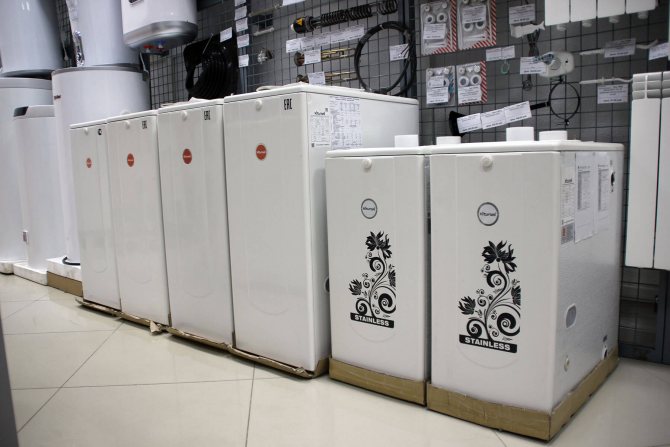

Following the boiler's performance, the number on the price tag also grows
- Classic solid fuel boilers, when operating with a heat transfer below the nominal, reduce efficiency due to incomplete combustion of fuel. Reducing heat generation is achieved in them in the simplest way - by limiting the air supply with a damper.
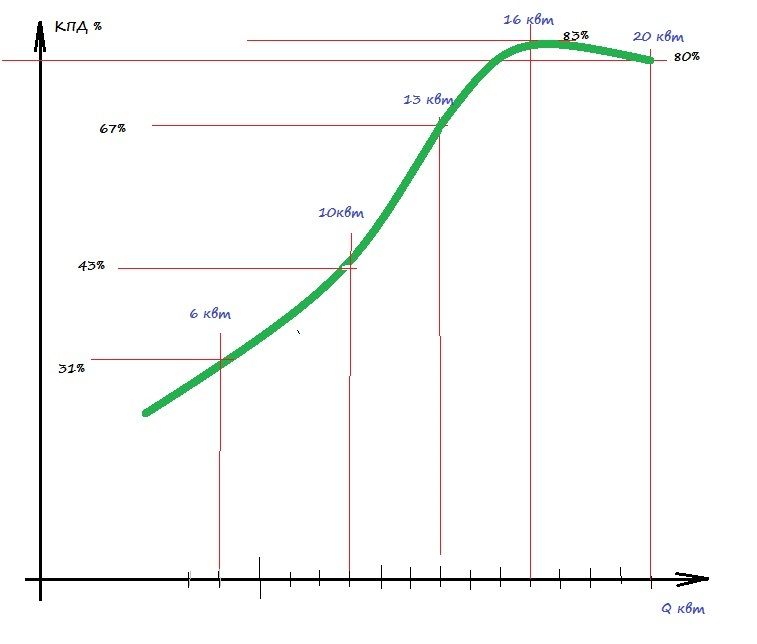

Change in the efficiency of a solid fuel boiler with a change in heat transfer
What do we think
We have to:
- Estimate water consumption at peak consumption.
- Calculate the cross-section of the water pipe that can provide this flow rate at an acceptable flow rate.
Note: the maximum water flow rate at which it does not generate hydraulic noise is about 1.5 m / s.
- Calculate the head at the end fixture. If it is unacceptably low, it is worth considering either increasing the diameter of the pipeline, or installing an intermediate pump.
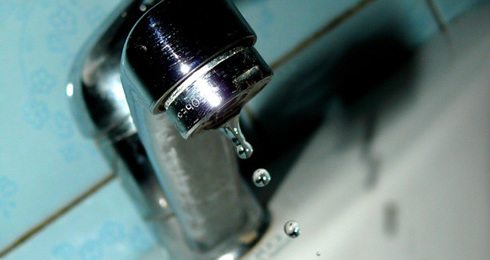

The low pressure on the end mixer is unlikely to please the owner.
The tasks are formulated. Let's get started.
Consumption
It can be roughly estimated by the consumption rates for individual plumbing fixtures. Data, if desired, can be easily found in one of the annexes to SNiP 2.04.01-85; for the convenience of the reader, we present an excerpt from it.
| Device type | Cold water consumption, l / s | Total consumption of hot and cold water, l / s |
| Watering tap | 0,3 | 0,3 |
| Toilet bowl with a tap | 1,4 | 1,4 |
| Toilet with cistern | 0,10 | 0,10 |
| Shower cubicle | 0,08 | 0,12 |
| Bath | 0,17 | 0,25 |
| Washing | 0,08 | 0,12 |
| Washbasin | 0,08 | 0,12 |
In apartment buildings, when calculating the consumption, the probability coefficient of the simultaneous use of devices is used. It is enough for us to simply sum up the water consumption through devices that can be used at the same time. Let's say a sink, a shower stall and a toilet bowl will give a total flow equal to 0.12 + 0.12 + 0.10 = 0.34 l / s.
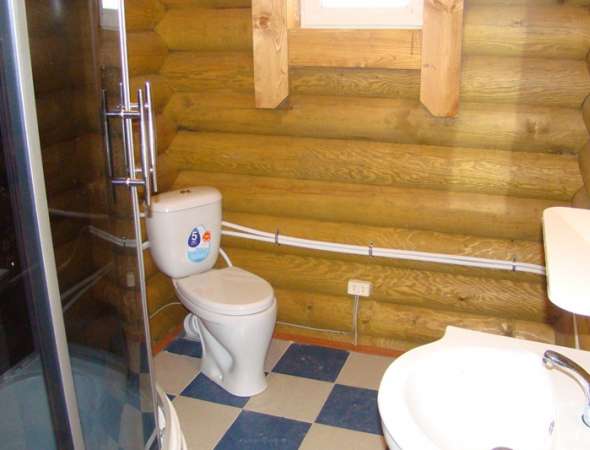

Water consumption through devices capable of operating simultaneously is summed up.
Cross section
Calculation of the cross-section of a water pipe can be performed in two ways:
- Selection according to the table of values.
- Calculated according to the maximum permissible flow rate.
Selection by table
Actually, the table does not require any comments.
| Nominal pipe bore, mm | Consumption, l / s |
| 10 | 0,12 |
| 15 | 0,36 |
| 20 | 0,72 |
| 25 | 1,44 |
| 32 | 2,4 |
| 40 | 3,6 |
| 50 | 6 |
For example, for a flow rate of 0.34 l / s, a DU15 pipe is sufficient.
Please note: DN (nominal bore) is approximately equal to the inner diameter of the water and gas pipe. For polymer pipes marked with an outer diameter, the inner one differs from it by about a step: say, a 40 mm polypropylene pipe has an inner diameter of about 32 mm.


Nominal bore is approximately equal to the inner diameter.
Flow rate calculation
Calculation of the diameter of the water supply system by the flow rate of water through it can be performed using two simple formulas:
- Formulas for calculating the area of a section along its radius.
- Formulas for calculating the flow rate through a known section at a known flow rate.
The first formula is S = π r ^ 2. In it:
- S is the required cross-sectional area.
- π is pi (approximately 3.1415).
- r is the section radius (half of the DN or the inner diameter of the pipe).
The second formula looks like Q = VS, where:
- Q - consumption;
- V is the flow rate;
- S is the cross-sectional area.
For the convenience of calculations, all values are converted to SI - meters, square meters, meters per second and cubic meters per second.
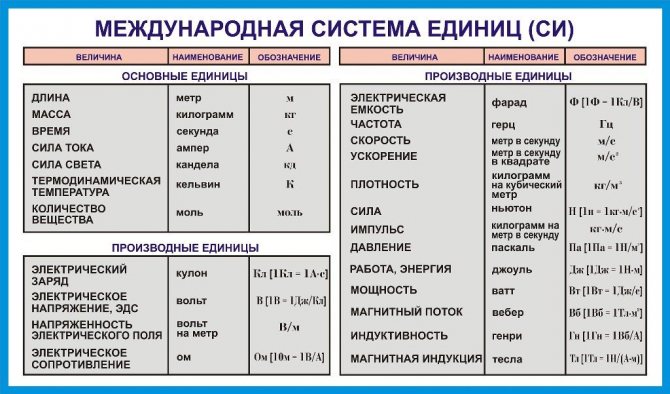

SI units.
Let's calculate with our own hands the minimum DU of the pipe for the following input data:
- The flow through it is all the same 0.34 liters per second.
- The flow velocity used in the calculations is the maximum allowable 1.5 m / s.
Let's get started.
- The flow rate in SI values will be equal to 0.00034 m3 / s.
- The sectional area according to the second formula must be at least 0.00034 / 1.5 = 0.00027 m2.
- The square of the radius according to the first formula is 0.00027 / 3.1415 = 0.000086.
- Take the square root of this number. The radius is 0.0092 meters.
- To get DN or inner diameter, multiply the radius by two. The result is 0.0184 meters, or 18 millimeters. As you can easily see, it is close to that obtained by the first method, although it does not exactly coincide with it.
Calculation by volume with correction factors
How to calculate the boiler capacity for hot water supply and heating, taking into account all the factors described above?
- The base value of the heat output is 40 watts per cubic meter of the internal heated volume;
- The regional coefficient is taken equal to:
| Average January temperature, ° С | Coefficient |
| 0 and higher | 0,7 |
| -5 — 0 | 0,9 |
| -10 | 1,1 |
| -20 | 1,3 |
| -25 | 1,5 |
| -35 | 1,8 |
| -40 and below | 2 |
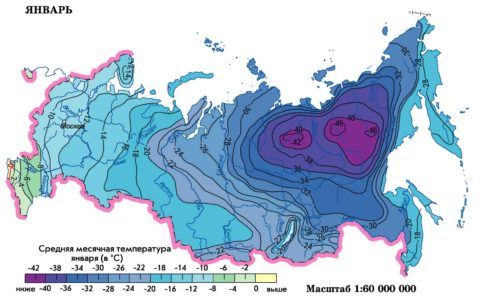

Average January temperature for different regions of the Russian Federation
- The insulation coefficient is selected from the following range of values:
| Picture | Description of building insulation and coefficient |
| Lack of insulation, metal or shield walls - 3-4 |
| Bricklaying of walls, single-layer glazing of windows - 2-3 |
| Wall masonry in two bricks and single-chamber double-glazed windows - 1-2 |
| Insulated facade, double-glazed windows - 0.6-0.9 |
- The power reserve for unaccounted heat losses and for heating hot water is calculated according to the previous scheme.
Let's repeat our calculation of the boiler for hot water supply and heating with a number of additional inputs:
- The height of the ceilings in the house is 3 meters;
- The house is located in Sevastopol (average January temperature is +3 degrees);
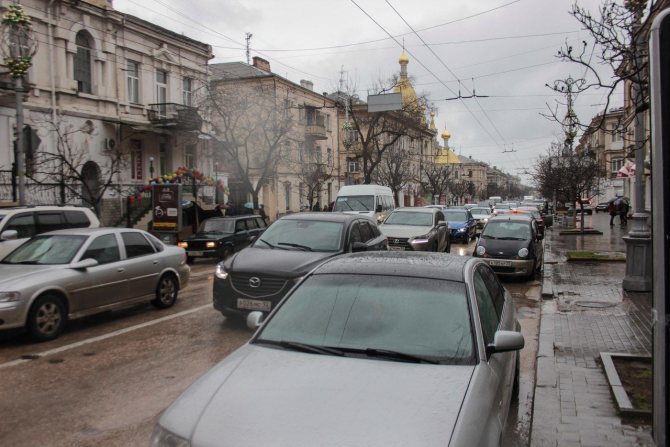

In the photo - January in Sevastopol
- It is equipped with single-chamber plastic windows and stone walls without additional insulation 40 cm thick.
So:
- The heated volume is 100 * 3 = 300 m3;
- The base value of the thermal power for heating is 300 * 40 = 12 kW;
- The climate of Sevastopol gives us a regional coefficient of 0.7. 12 * 0.7 = 8.4 kW;
- The insulation coefficient is taken equal to 1.2. 1.2 * 8.4 = 10.08;
- Taking into account the safety factor and the power reserve for the operation of the flow heater, we get the same 14 kW.
Was it worth it to complicate the calculations if the result is unchanged?
Certainly. If we mentally place our house in the city of Oymyakon, Yakutsk region (average January temperature -46.4 degrees), the demand for heat and, accordingly, the calculated heating capacity of the boiler will increase by 2 / 0.7 (the ratio of regional coefficients) = 2.85 times. Insulation of the facade and the installation of energy-saving double-glazed windows in the windows will cut it in half.
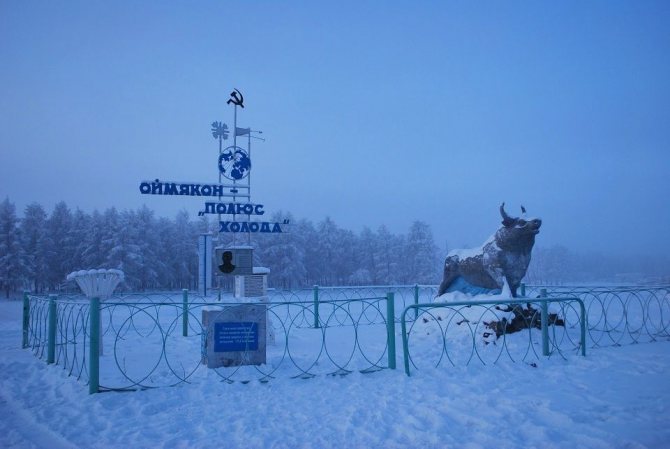

Oymyakon is the coldest city in the country
Pressure
Let's start with a few general notes:
- Typical pressure in the cold water supply line is from 2 to 4 atmospheres (kgf / cm2)... It depends on the distance to the nearest pumping station or water tower, on the terrain, the state of the mains, the type of valves on the main water supply and a number of other factors.
- The absolute minimum pressure that allows all modern plumbing fixtures and household appliances using water to work is 3 meters... The instruction for Atmor instantaneous water heaters, for example, directly says that the lower response threshold of the pressure sensor that includes heating is 0.3 kgf / cm2.
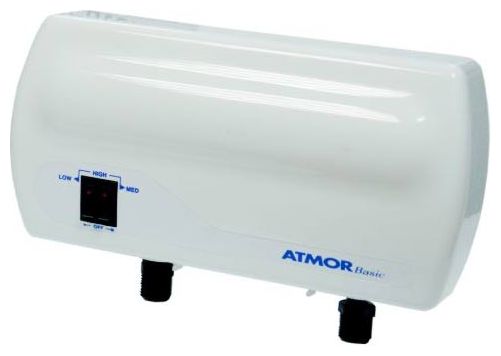

The pressure sensor of the device is triggered at a pressure of 3 meters.
Reference: at atmospheric pressure, 10 meters of head corresponds to 1 kgf / cm2 overpressure.
In practice, on an end fixture, it is better to have a minimum head of five meters. A small margin compensates for unaccounted for losses in connections, shut-off valves and the device itself.
We need to calculate the head drop in a pipeline of known length and diameter. If the difference in pressure corresponding to the pressure in the main line and the drop in pressure in the water supply system is more than 5 meters, our water supply system will function flawlessly. If it is less, you need to either increase the diameter of the pipe, or open it by pumping (the price of which, by the way, will clearly exceed the growth in costs for pipes due to an increase in their diameter by one step).
So how is the calculation of the pressure in the water supply network carried out?
Here the formula H = iL (1 + K) is valid, in which:
- H is the coveted value of the pressure drop.
- i is the so-called hydraulic slope of the pipeline.
- L is the length of the pipe.
- K is a coefficient that is determined by the functionality of the water supply system.
The easiest way is to determine the K.
It is equal to:
- 0.3 for household and drinking purposes.
- 0.2 for industrial or fire-fighting.
- 0.15 for fire and production.
- 0.10 for a firefighter.
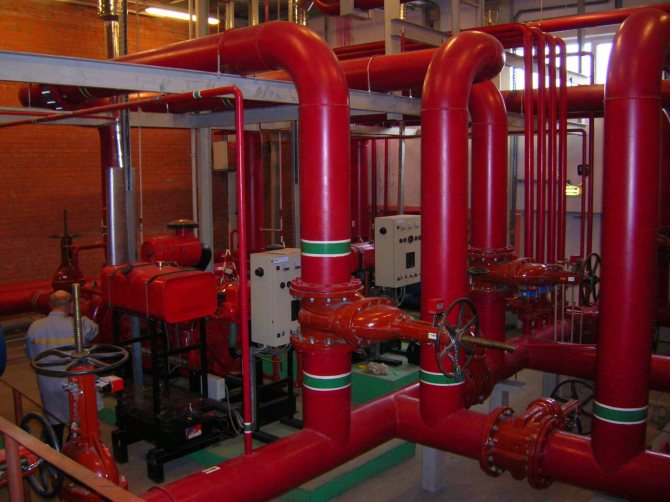

In the photo there is a fire water supply system.
There are no special difficulties with measuring the length of the pipeline or its section; but the concept of hydraulic bias requires a separate discussion.
Its value is influenced by the following factors:
- The roughness of the pipe walls, which, in turn, depends on their material and age. Plastics have a smoother surface than steel or cast iron; in addition, steel pipes become overgrown with limescale deposits and rust over time.
- Pipe diameter. The inverse relationship operates here: the smaller it is, the more resistance the pipeline has to the movement of water in it.
- Flow rate. With its increase, the resistance also increases.
Some time ago, it was necessary to additionally take into account hydraulic losses on valves; however, modern full bore ball valves create roughly the same resistance as a pipe and can therefore be safely ignored.
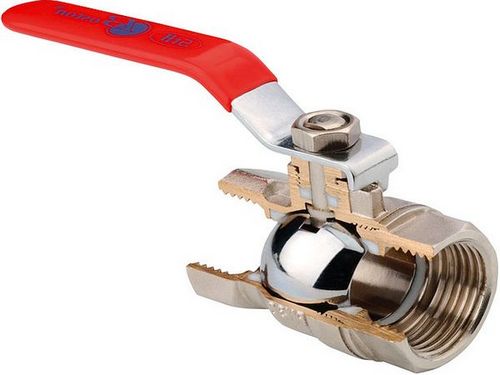

An open ball valve has almost no resistance to the flow of water.
Calculating the hydraulic slope on your own is very problematic, but, fortunately, this is not necessary: all the necessary values can be found in the so-called Shevelev tables.
To give the reader an idea of what is at stake, we present a small fragment of one of the tables for a plastic pipe with a diameter of 20 mm.
| Consumption, l / s | Flow speed, m / s | 1000i |
| 0,25 | 1,24 | 160,5 |
| 0,30 | 1,49 | 221,8 |
| 0,35 | 1,74 | 291,6 |
| 0,40 | 1,99 | 369,5 |
What is the 1000i in the far right column of the table? This is just the hydraulic slope value per 1000 linear meters. To get the value of i for our formula, it is enough to divide it by 1000.
Let's calculate the pressure drop in a pipe with a diameter of 20 mm with its length equal to 25 meters and a flow rate of one and a half meters per second.
- We are looking for the corresponding parameters in the table. According to her data, 1000i for the described conditions is 221.8; i = 221.8 / 1000 = 0.2218.
Shevelev's tables have been reprinted many times since the first publication.
- Substitute all values into the formula. H = 0.2218 * 25 * (1 + 0.3) = 7.2085 meters. With a pressure at the inlet of the water supply system of 2.5 atmospheres at the outlet, it will be 2.5 - (7.2 / 10) = 1.78 kgf / cm2, which is more than satisfactory.
Simple area calculation
The simplest rough calculation of the power of a water supply boiler can be performed based on the need for a house in thermal energy of 100 watts per square meter. For a house with an area of 100 m2, therefore, 10 kW are needed.
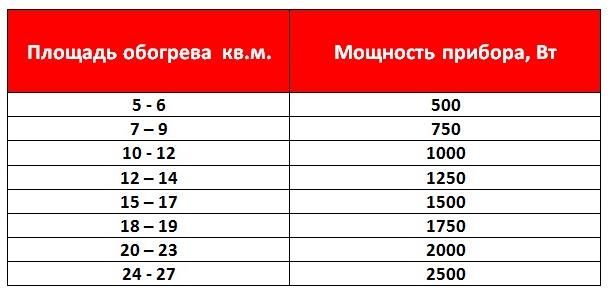

100 watts of heat is taken per square of heated area
Additionally, a safety factor of 1.2 is introduced, which compensates for unaccounted heat losses and helps to maintain a comfortable temperature in the room during extreme frosts. What adjustments does the hot water supply from the boiler make to this scheme?
It can be provided in two ways:
- Storage water heater (indirect heating boiler)... In this case, an additional factor of 1.1 is introduced: the boiler removes a relatively small amount of heat from the heating system;
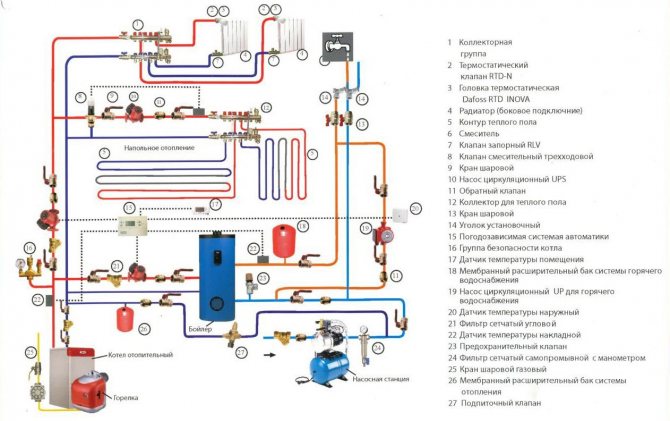

Water supply scheme for a solid fuel boiler, with an indirect heating boiler
- Instantaneous heater of a double-circuit boiler... A factor of 1.2 is used here. Taking into account the safety factor, the thermal performance of the boiler should exceed the estimated heat demand of the house by 40 percent. In our example with a 100-meter cottage, when heating and hot water are connected, the boiler should produce 14 kW.
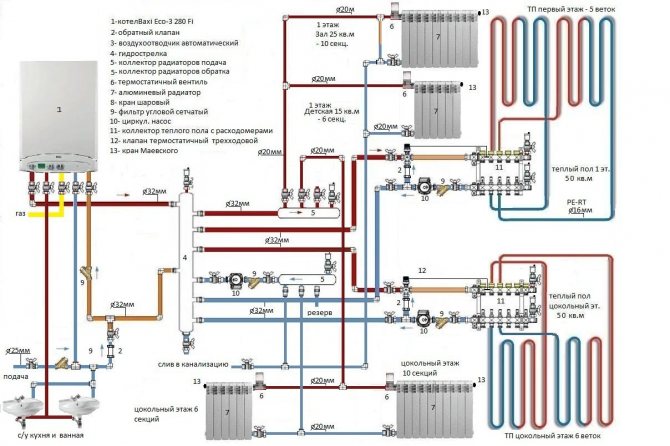

Heating system connection and water supply diagram for a double-circuit boiler
Please note: in the latter case, a small power reserve for the needs of hot water supply is associated with the short-term operation of the flow heater. Hot water is rarely consumed more than half an hour a day, and the heating system has a certain inertia, so the parameters of the coolant do not go beyond the standard values.
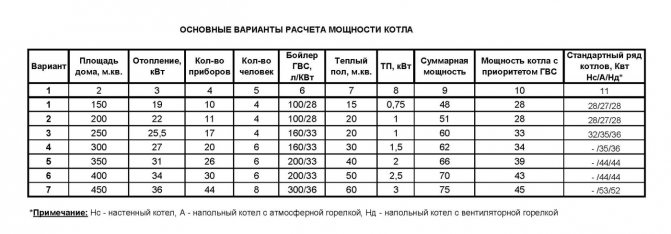

Simple calculation of a boiler with hot water supply by the area of the house
This calculation scheme is simple, but has several serious drawbacks:
- It takes into account the area of the heated room, not its volume.Meanwhile, the need for heat in cottages with a ceiling height of 2.5 and 4 meters will be very different;
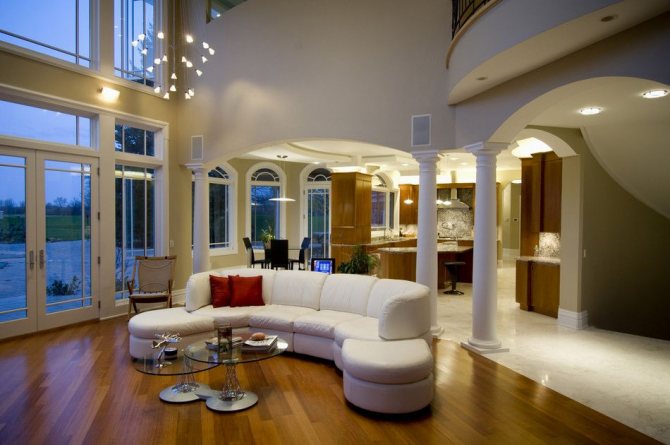

A room with a high ceiling needs more heat
- She ignores the differences between climatic zones. As you know, the heat loss of a building is directly proportional to the temperature difference between the interior and the street and will vary greatly in Crimea and Yakutia;
- It does not take into account the quality of the building insulation. For brickwork and a facade insulated with a foam fur coat, heat loss will differ significantly.
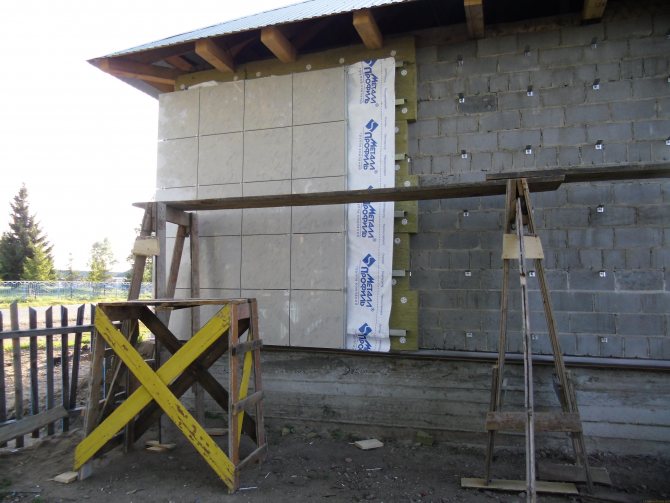

Insulation of the facade can significantly reduce heat loss

